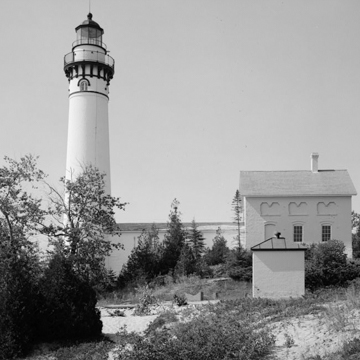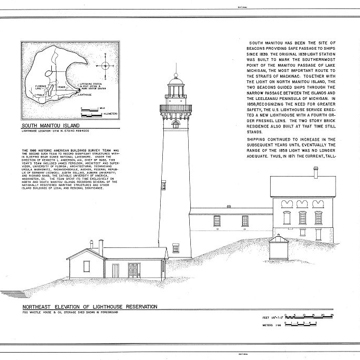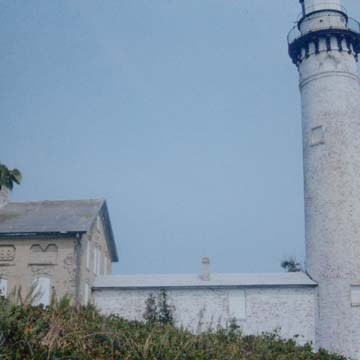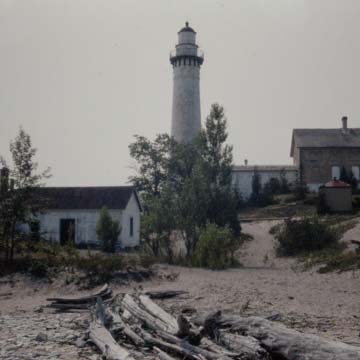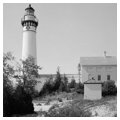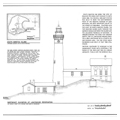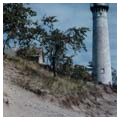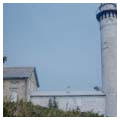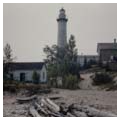The lighthouse marks the Manitou Passage, which runs between the mainland and the Manitou islands and serves as the major shipping channel between Chicago and the Straits of Mackinac. The South Manitou Island harbor is one of the few natural deepwater harbors on Lake Michigan between Chicago and the Straits, and the island possessed a vast supply of timber. Wood-burning steamers frequently stopped at South Manitou Island to take on hardwood for fuel. A light station has aided navigation here since 1839. The yellow brick lightkeeper's dwelling was constructed in 1858 and the 104-foot-high conical brick tower in 1870. The U.S. Coast Guard abandoned the light in 1958, but the National Park Service relighted it in 2008 with a replica of the original Fresnel lens.
You are here
South Manitou Island Light
1858 lightkeeper's house; 1870 tower. The southeast point of the island, Sleeping Bear Dunes National Lakeshore
If SAH Archipedia has been useful to you, please consider supporting it.
SAH Archipedia tells the story of the United States through its buildings, landscapes, and cities. This freely available resource empowers the public with authoritative knowledge that deepens their understanding and appreciation of the built environment. But the Society of Architectural Historians, which created SAH Archipedia with University of Virginia Press, needs your support to maintain the high-caliber research, writing, photography, cartography, editing, design, and programming that make SAH Archipedia a trusted online resource available to all who value the history of place, heritage tourism, and learning.















